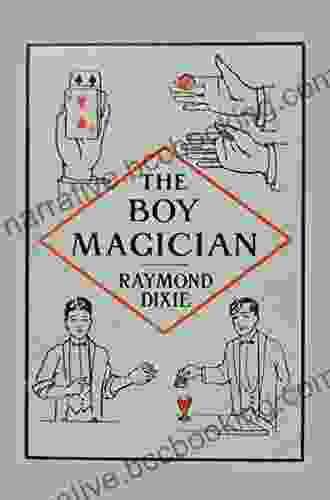Mathematical Models of Financial Derivatives: A Comprehensive Guide for Practitioners and Researchers

Financial derivatives are complex financial instruments that are used to manage risk and speculate on the future value of assets. The mathematical models used to price and risk-manage financial derivatives are complex and require a deep understanding of mathematics.
4.7 out of 5
| Language | : | English |
| File size | : | 11923 KB |
| Screen Reader | : | Supported |
| Print length | : | 386 pages |
This book provides a comprehensive overview of the mathematical models used to price and risk-manage financial derivatives. It is written for practitioners and researchers who need a deep understanding of the underlying mathematics.
Table of Contents
- Forward Contracts
- Futures Contracts
- Options Contracts
- Swaps
- Credit Derivatives
- Risk Management
- s
Financial derivatives are financial instruments that derive their value from the value of an underlying asset, such as a stock, bond, or commodity. Financial derivatives are used to manage risk and speculate on the future value of assets.
The mathematical models used to price and risk-manage financial derivatives are complex and require a deep understanding of mathematics. This book provides a comprehensive overview of the mathematical models used to price and risk-manage financial derivatives.
Forward Contracts
Forward contracts are agreements to buy or sell an asset at a specified price on a specified date in the future. Forward contracts are used to lock in a price for an asset, which can be useful for managing risk or speculating on the future value of the asset.
The mathematical model used to price forward contracts is the Black-Scholes model. The Black-Scholes model is a stochastic differential equation that describes the evolution of the price of an asset over time. The Black-Scholes model can be used to price forward contracts for a variety of underlying assets, including stocks, bonds, and commodities.
Futures Contracts
Futures contracts are similar to forward contracts, but they are traded on an exchange. Futures contracts are standardized contracts that have a specified size and expiration date. Futures contracts are used to manage risk and speculate on the future value of an asset.
The mathematical model used to price futures contracts is the same as the mathematical model used to price forward contracts. The Black-Scholes model can be used to price futures contracts for a variety of underlying assets, including stocks, bonds, and commodities.
Options Contracts
Options contracts are agreements that give the buyer the right, but not the obligation, to buy or sell an asset at a specified price on a specified date in the future. Options contracts are used to manage risk and speculate on the future value of an asset.
The mathematical model used to price options contracts is the Black-Scholes model. The Black-Scholes model is a stochastic differential equation that describes the evolution of the price of an asset over time. The Black-Scholes model can be used to price options contracts for a variety of underlying assets, including stocks, bonds, and commodities.
Swaps
Swaps are agreements to exchange cash flows between two parties at specified intervals. Swaps are used to manage risk and speculate on the future value of interest rates or other financial instruments.
The mathematical model used to price swaps is the LIBOR market model. The LIBOR market model is a stochastic differential equation that describes the evolution of the LIBOR interest rate over time. The LIBOR market model can be used to price swaps for a variety of maturities and currencies.
Credit Derivatives
Credit derivatives are agreements that protect the buyer from the risk of default by a third party. Credit derivatives are used to manage risk and speculate on the creditworthiness of companies or governments.
The mathematical model used to price credit derivatives is the Merton model. The Merton model is a structural credit risk model that describes the probability of default of a company or government. The Merton model can be used to price credit derivatives for a variety of credit ratings and maturities.
Risk Management
Financial derivatives can be used to manage risk. Financial derivatives can be used to hedge against the risk of price fluctuations, interest rate fluctuations, or credit risk. Financial derivatives can also be used to speculate on the future value of assets.
The mathematical models used to price and risk-manage financial derivatives are essential for understanding the risk and return of financial
4.7 out of 5
| Language | : | English |
| File size | : | 11923 KB |
| Screen Reader | : | Supported |
| Print length | : | 386 pages |
Do you want to contribute by writing guest posts on this blog?
Please contact us and send us a resume of previous articles that you have written.
 Book
Book Novel
Novel Page
Page Chapter
Chapter Text
Text Story
Story Genre
Genre Reader
Reader Library
Library Paperback
Paperback E-book
E-book Magazine
Magazine Newspaper
Newspaper Paragraph
Paragraph Sentence
Sentence Bookmark
Bookmark Shelf
Shelf Glossary
Glossary Bibliography
Bibliography Foreword
Foreword Preface
Preface Synopsis
Synopsis Annotation
Annotation Footnote
Footnote Manuscript
Manuscript Scroll
Scroll Codex
Codex Tome
Tome Bestseller
Bestseller Classics
Classics Library card
Library card Narrative
Narrative Biography
Biography Autobiography
Autobiography Memoir
Memoir Reference
Reference Encyclopedia
Encyclopedia Christopher Dickey
Christopher Dickey Cheryl Burke
Cheryl Burke Charles W Calhoun
Charles W Calhoun Chloe Gong
Chloe Gong Cheryl Willis Hudson
Cheryl Willis Hudson Cathy Erway
Cathy Erway Christina Diehl
Christina Diehl Chelsea Hanson
Chelsea Hanson Chris Bowers
Chris Bowers Chenxin Jiang
Chenxin Jiang Choyo Wilson Daniel
Choyo Wilson Daniel Christopher Gillberg
Christopher Gillberg Chris Hauty
Chris Hauty Chester Nez
Chester Nez Christina Bennett
Christina Bennett Charodan
Charodan Christina Lamb
Christina Lamb Charles R Garoian
Charles R Garoian Cathy Glass
Cathy Glass Christopher Marlowe
Christopher Marlowe
Light bulbAdvertise smarter! Our strategic ad space ensures maximum exposure. Reserve your spot today!
 William ShakespeareFollow ·6.1k
William ShakespeareFollow ·6.1k Allen ParkerFollow ·13.8k
Allen ParkerFollow ·13.8k Ethan MitchellFollow ·2.8k
Ethan MitchellFollow ·2.8k Graham BlairFollow ·6.7k
Graham BlairFollow ·6.7k Leo TolstoyFollow ·2.3k
Leo TolstoyFollow ·2.3k Harvey HughesFollow ·19.1k
Harvey HughesFollow ·19.1k Dion ReedFollow ·11.9k
Dion ReedFollow ·11.9k Matt ReedFollow ·11k
Matt ReedFollow ·11k

 J.R.R. Tolkien
J.R.R. TolkienEscape to the Culinary Paradise: "Truck Stop Deluxe In...
Prepare your palate for an...

 Andres Carter
Andres CarterA Taste of the Unusual: Discover the Enchanting World of...
Prepare to be captivated by "Cindy Supper...

 Nick Turner
Nick TurnerChild Obesity: Introducing the Idea of Healthy Weight
Child obesity is a serious...

 Junot Díaz
Junot DíazGoing Local: Your Ultimate Guide to Swiss Schooling |...
In the heart of Europe, Switzerland boasts a...

 Raymond Parker
Raymond ParkerSir Cumference and the Dragon of Pi: A Mathematical Fable
In the enchanting realm of...

 Thomas Powell
Thomas PowellUnveiling the Enchanting Realm of Curious Creatures from...
Russian folklore is a rich tapestry of...
4.7 out of 5
| Language | : | English |
| File size | : | 11923 KB |
| Screen Reader | : | Supported |
| Print length | : | 386 pages |












